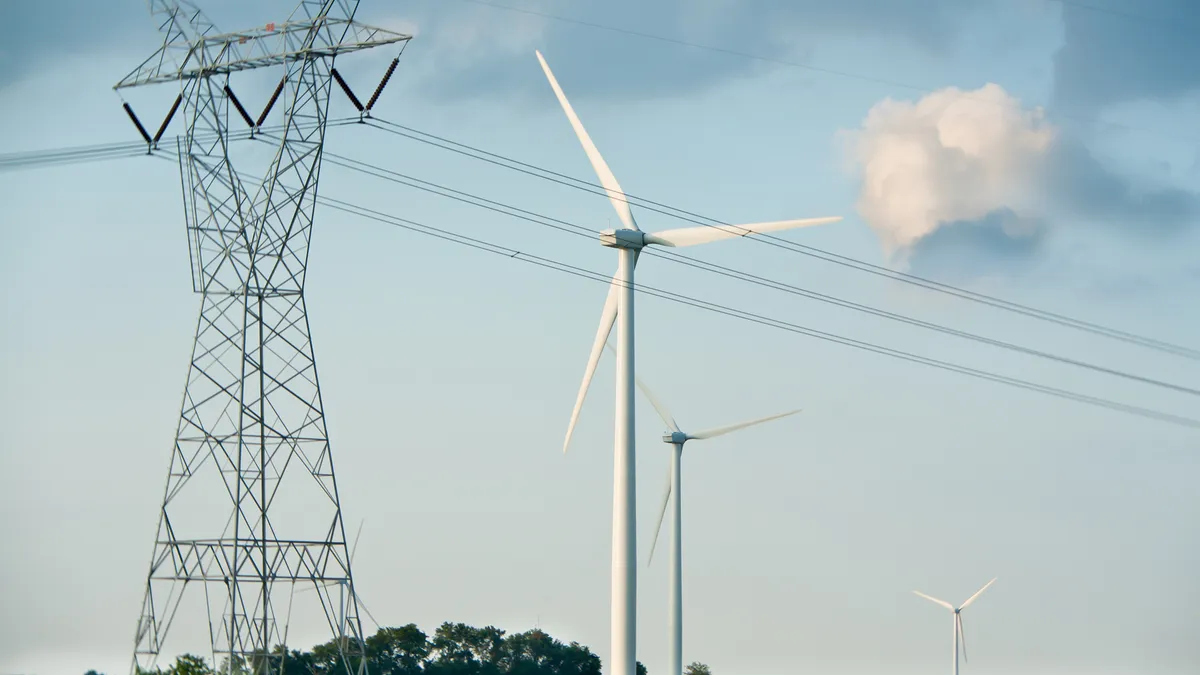Dive Brief:
- The Federal Energy Regulatory Commission on Tuesday accepted the second phase of a new long-term transmission planning process, which ISO New England said it designed to give states “greater control in achieving their energy and environmental policies and goals.”
- The Phase 2 Longer-Term Transmission Planning tariff changes create new review metrics around project costs, environmental impacts, siting and other factors, and includes a process for groups of states to pay for projects others in the region may not support.
- FERC determined the LTTP approach is just and reasonable and creates an “alternative voluntary process” that will not conflict with or replace the existing regional transmission planning process approved under Order 1000, which set planning and cost allocation requirements for public utility transmission providers.
Dive Insight:
Commenters on New England’s proposal, including LS Power and NextEra Energy, said the proposed competitive solicitation process would limit nonincumbent transmission projects, but FERC ultimately overruled those concerns.
Even if the LTTP approach does make it more difficult for nonincumbent transmission developers to submit comprehensive proposals than it would be for incumbent transmission owners, “such potential difficulty does not render the proposed LTTP Phase 2 Changes unjust and unreasonable or unduly discriminatory or preferential,” the commission said.
FERC said the tariff changes would likely maximize the chances that longer-term transmission solutions “are ultimately developed, reducing the likelihood that the process will terminate because submitted Longer-Term Proposals that each address only some of the transmission needs in the [request for proposals] cannot be combined in a manner that addresses all of the identified needs.”
FERC also approved an “alternative cost allocation method” for a long-term transmission upgrades.
“The incremental costs associated with meeting any longer-term needs beyond those necessary to address any reliability or market efficiency needs included in the RFP would be allocated to the New England state or states that voluntarily assume those costs,” the commission said.
The commission directed the New England grid operator to make a compliance filing within 30 days.
The LTTP process “will allow the region to implement transmission system upgrades based on the results of longer-term transmission studies such as the recent 2050 Transmission Study,” ISO New England said in a Wednesday blog post.
“Many elements” of LTTP Phase 2 are aligned with FERC’s recent Order 1920, which also addresses regional transmission planning, the ISO said.
FERC issued Order 1920 in May, requiring transmission providers to conduct long-term, scenario-based transmission planning, and requiring the use of certain factors, such as expected demand growth and resource mixes, to develop transmission plans that look ahead at least 20 years.
The New England grid operator said it “expects to begin discussions on this order later in 2024, and will continue to work with states and other stakeholders to ensure the region’s transmission system maintains its current high standard of reliability,”
The LTTP tariff changes are the result of a process that began in 2020, when the New England States Committee on Electricity called for the grid operator to take a longer view of transmission planning. FERC accepted changes resulting from the first phase of the process in 2022, including a mechanism allowing states to request the ISO perform system planning analysis beyond a 10-year planning horizon.















